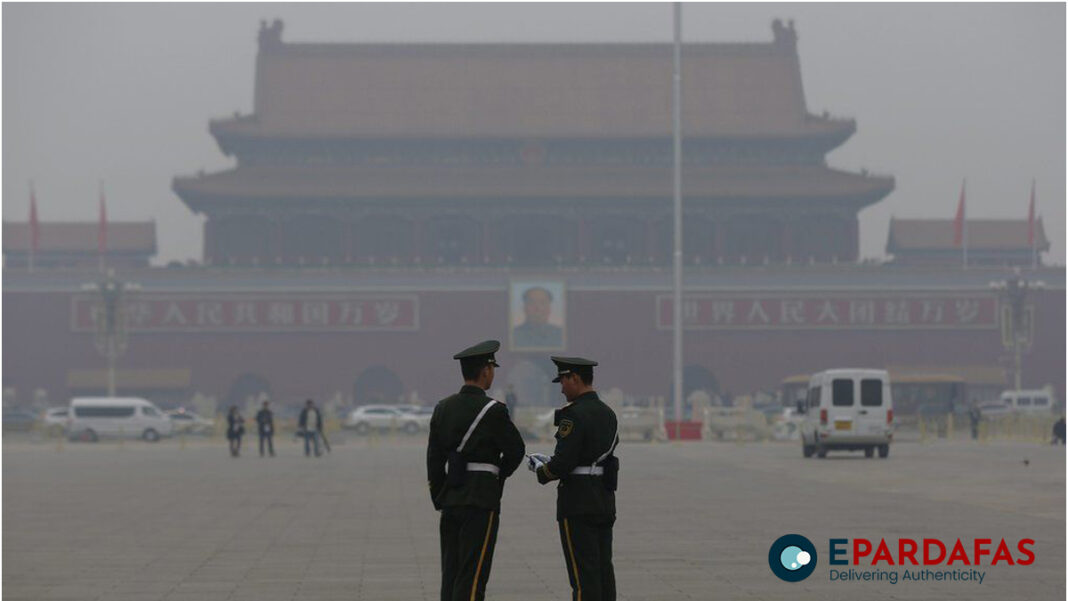Environmentalists have intensified their pressure campaign against Chinese support for the East African Crude Oil Pipeline. Activists are urging Chinese lenders—State-owned China Export & Credit Insurance Corporation Sinosure, Export-Import Bank of China, and Industrial and Commercial Bank of China—to abandon their plans to finance the controversial USD 5 billion project. They argue that the pipeline’s development poses a threat to pristine ecosystems, biodiversity hotspots, water resources, and community land in Uganda and Tanzania.
This is not an isolated incident that has drawn climate activists’ ire. China, being the world’s biggest polluter, consumes over half of the world’s coal. The country burns more than 4 billion tons of coal annually, equivalent to 58% of the global demand in 2022. Additionally, China imports more oil and liquefied natural gas (LNG) than any other nation. In 2021, China was the world’s largest foreign financier of fossil fuel infrastructure, contributing almost a third of the world’s greenhouse gases in 2020.
This is unsurprising given that China’s 1.4 billion people account for 19% of the world’s population, 22% of the global gross domestic product (GDP), and 26% of the planet’s energy consumption. Ironically, according to UN figures, China is also the most exposed to the impact of the climate crisis and environmental disasters due to its population size.
This exposure became evident in 2022 when China set new records for extreme temperatures, faced the heaviest rains in over a decade, and struggled with the worst droughts in 60 years. Significant parts of the economically, industrially, and environmentally crucial Yangtze River dried up, affecting hydropower generation, halting shipping, and forcing major companies to suspend operations. Consequently, the country increased its reliance on fossil fuels to meet energy demands.
In 2020, Chinese President Xi Jinping pledged to achieve zero emissions by 2060, but China refuses to commit to reducing coal use until 2025. Although Xi announced in September 2021 that China would cease building coal plants overseas, the country resisted international calls to stop using coal domestically.
Currently, almost two-thirds of China’s population lives in cities, and electricity represents around 24% of the country’s final energy consumption. Over the past two years, China has faced severe power shortages, unprecedented droughts, and poor energy management, leading to increased domestic production of dirtier and lower-quality coal.
In the first half of 2021, state-owned firms proposed 43 new coal-fired generators, and construction began on 15 GW of new coal-power capacity. In 2022, the country increased its coal production by 9% to 4.5 billion tons, gas production by 6.4% to 218 billion cubic meters, and crude oil production surpassed 200 million tons for the first time since 2015.
This trend continues in 2023, with at least 50 GW of new coal-firing power plants approved in the first six months. China’s coal generation capacity could reach 270 GW by 2025, surpassing the capacity in the US.
In 2019, China alone emitted about the same amount of CO2 as the next four countries combined, producing greenhouse gases equivalent to more than 13 billion tons of CO2 throughout the year. The top five Chinese utilities—Huaneng Group Co., Huadian Corp., China Energy Investment Corp., State Power Investment Corp, and Datang Co.—are among the world’s largest polluters, emitting 960 million tons of CO2 in 2020, more than double that of Russia’s entire coal fleet.
Curbing China’s greenhouse gas output can significantly contribute to safeguarding the planet, but these companies refuse to participate in United Nations-backed negotiations.
Chinese firms’ CO2 equivalent emissions (Metric ton):
SAIC Motor Corp.: 158 (Same as emissions of Argentina)
China Baowu Group: 211 (Equivalent to Belgium-Austria combined)
China Petroleum & Chemical Corp: 733 (Equivalent to Spain-Canada combined)
Petrochina Co. Ltd.: 881 (Equivalent to Vietnam-South Korea combined)
China National Building Material Group: 255 (Equivalent to France)
Source: Bloomberg
China’s plan
Global warming could bring devastating economic consequences for China, with estimated GDP losses of between 0.5% and 2.3% as early as 2030. The glaciers along the Hindu Kush and Himalaya range, often called the “water tower of Asia,” are melting at an alarming pace. Simultaneously, large parts of northern China are water-stressed. Increasing centralization in the Chinese political system and centrally directed solutions threaten the country’s capacity to adapt to this new reality.
To cope with the crisis, China has increased its adaptation efforts, implementing a series of plans, policies, and projects. These include constructing the largest water transfer system in history, expanding and raising 6,000 miles of sea walls along its coasts, building a grain reserve larger than the rest of the world’s combined, carving wetland flood basins in the centers of its largest cities, restoring coastal wetlands as buffers against storms, and relocating hundreds of thousands of “ecological migrants” in low-lying areas. Beijing is also investing heavily in developing clean energy technologies and related products. In 2022, it topped the list of investors in clean energy with $546 billion, half of that year’s global total. The country is already building more solar power capacity than the rest of the world combined and envisions itself becoming the global leader in the clean energy sector.
However, despite China’s commitment to mitigating the effects of the climate crisis and increasing its use of green energy, its plans do not address the root issue. Additionally, China has extremely limited capacity to store and transport power generated from renewable sources. China’s commitments fall short of what is needed, with greenhouse gas targets considered unambitious. While developed economies are reducing their emissions, China’s emissions are rising rapidly. The country’s fast-growing digital infrastructure, expected to more than double by 2030, poses a significant problem. Energy demand and greenhouse gas emissions will rise along with it, jeopardizing the country’s 2060 CO2 neutrality goal.

